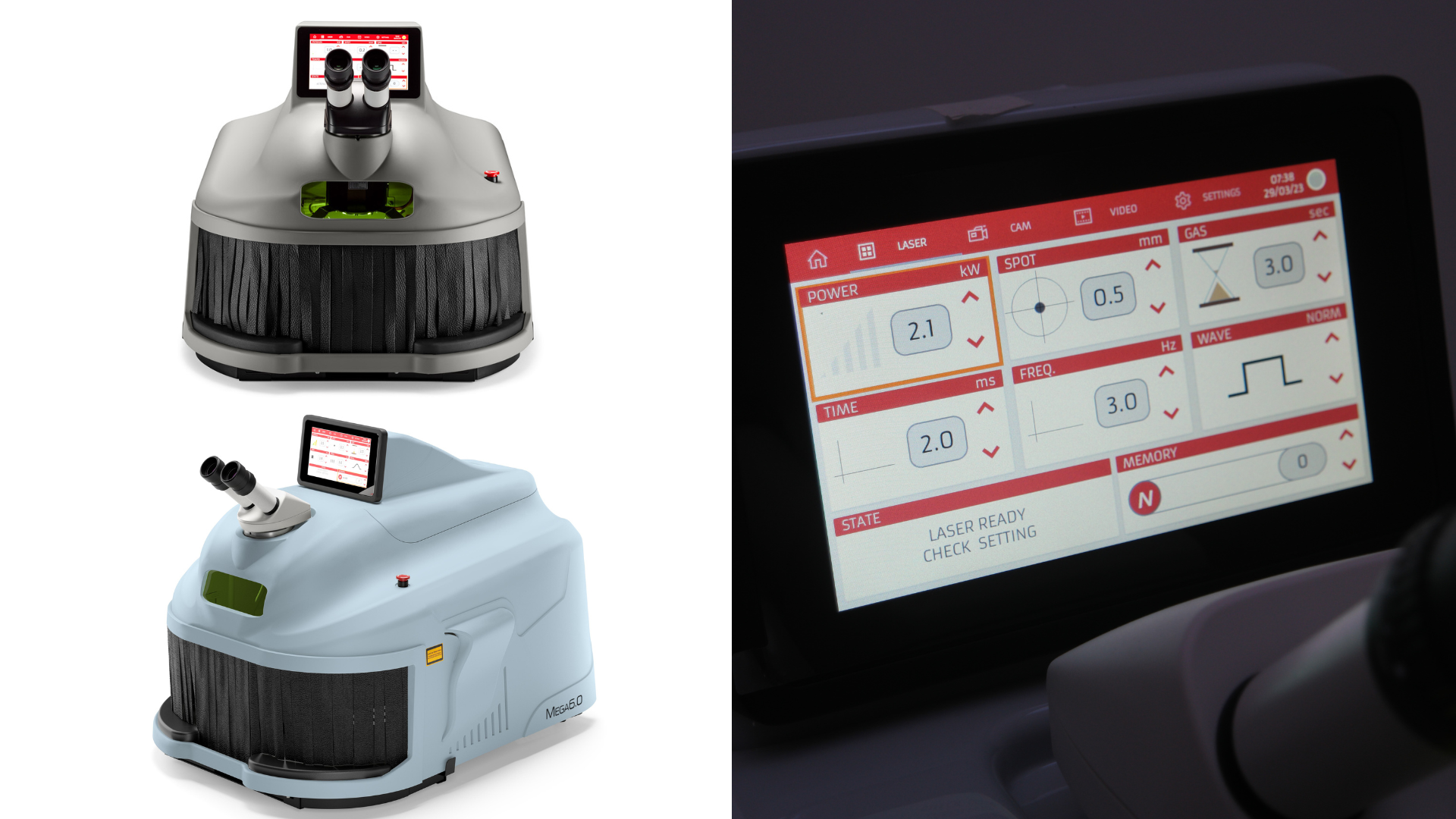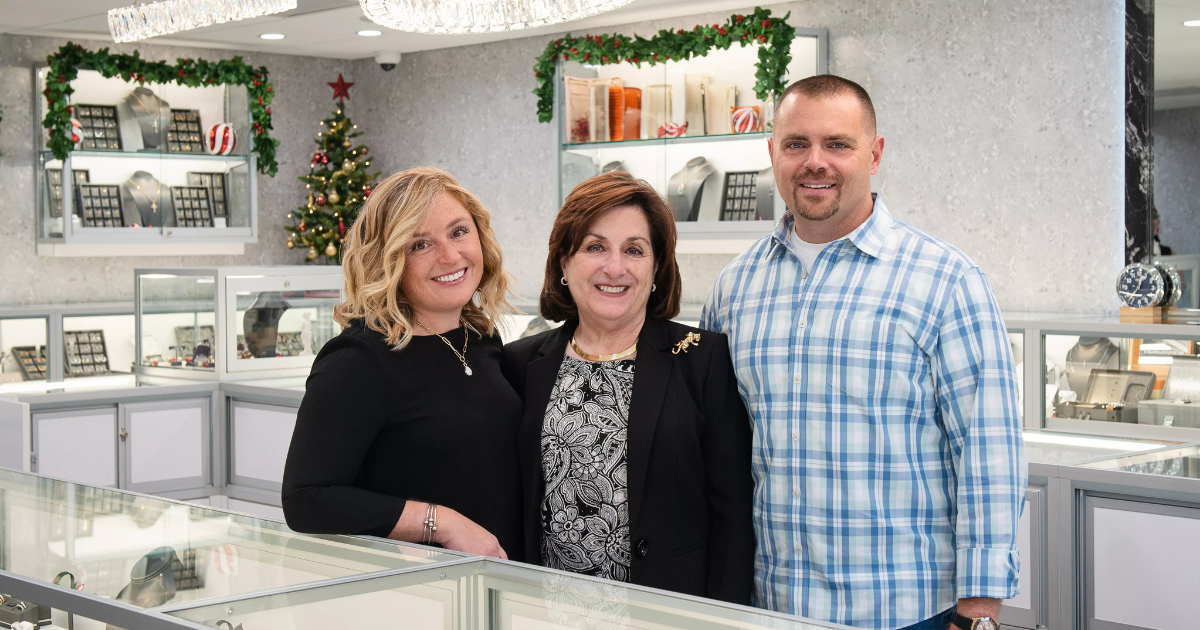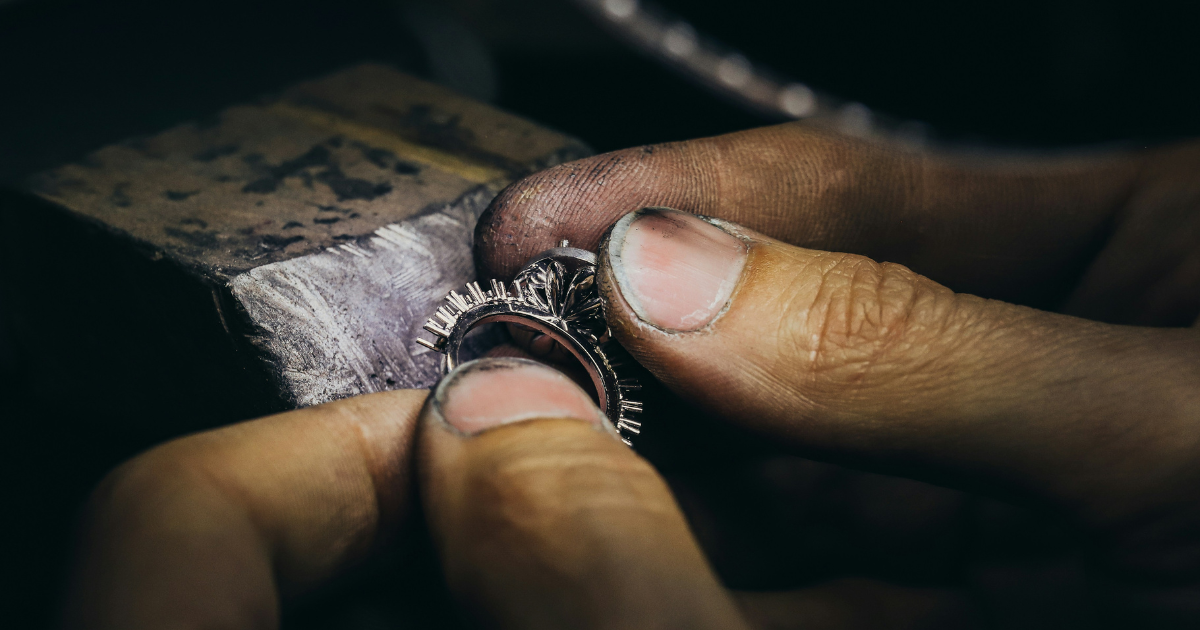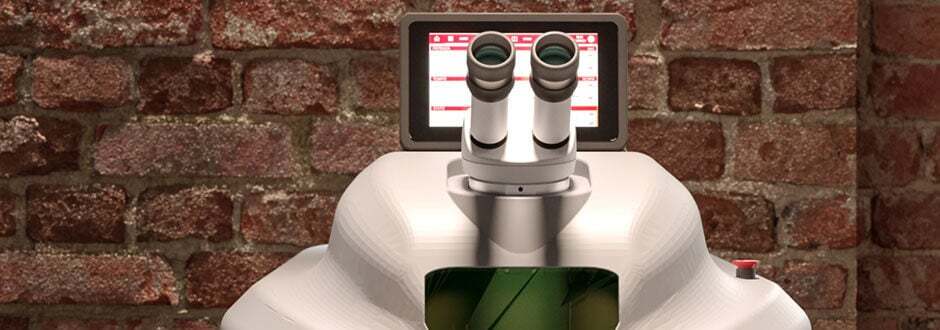Elettrolaser welders are designed to be not only reliable and precise but also user-friendly, comfortable, and easy to set up and use.
Our Research and Development department is particularly attentive to all these aspects, allowing us to provide our customers with tools that can be used with satisfaction after a very short training period. Elettrolaser technicians are always available to conduct training and retraining sessions for operators, but our experience has taught us that usually, only a few hours are enough to become autonomous in using the welder and then specialize, with experience, in performing specific tasks.
Setting up Elettrolaser Welders
Putting an Elettrolaser welder into operation is very simple: once the machine is properly positioned at the customer's site, connected to the power supply, and equipped with a pedal and microscope, it is sufficient to adjust the eyepieces to position zero and start loading the various programs. Once the welder is started and unlocked, an intermittent yellow light on the display indicates the activation of the laser and the possibility to proceed with setting the beam's parameters to obtain a laser beam compatible with the type of processing intended.
Through the touch screen, it is possible to manage the six different parameters that regulate the beam:
- Power: This parameter determines the power with which the beam hits the object to be welded and must be managed with particular attention, as excessive power can cause the metal to burn rather than melt. If during welding, the object tends to blacken, it is best to intervene by reducing the power since the laser might be too aggressive.
- Time: This parameter determines the duration of the laser pulse and should be adjusted in relation to the power parameter, as the combination of these two values determines the overall energy of the emitted beam. Our general advice is to set the two parameters with values that are generally similar, avoiding the use of short times with high power or very soft power with long times, as such imbalanced situations could lead to suboptimal results with the same total emitted energy.
- Spot: This parameter refers to the diameter of the laser beam and allows determining the area of the object that will be hit by the beam. The larger the spot, the more energy will be needed to achieve a certain result, so if the spot is widened, it is necessary to increase the energy parallelly by acting on the power and time parameters.
- Frequency: By adjusting this parameter, the number of laser pulses delivered with each press of the pedal is set. The frequency is self-limited in relation to the power and time values because setting a very high frequency and high power could lead to insufficient current supply from the power grid. In this case, the machine automatically reduces the frequency while maintaining the set power and time.
- Gas: This parameter allows managing a solenoid valve that regulates the emission of argon into the welding chamber. Argon is used only for titanium welding since this metal oxidizes immediately when struck by the laser. To obtain a clean and shiny weld, it is necessary to remove oxygen from the environment. Normally, the gas is disabled, but it can be activated for a certain number of seconds if necessary. When gas is activated, the first press of the pedal starts the argon output, while the second initiates the actual welding pulse.
- Wave: By adjusting this parameter, it is possible to modify the shape of the waveform generated by the laser beam. With the same energy delivered, different waveforms will produce different welding outcomes. Accurate adjustments to this parameter allow precise control of the welding process, down to differences of a few milliseconds.
Examples of Setup and Application of Elettrolaser Welders
Adjusting the different parameters allows obtaining very precise welding results, but it requires a certain investment of time. To simplify the work of operators, Elettrolaser welders are equipped with a hundred memories that can be set by users. In this way, once the optimal parameter set for a specific task is identified, it can be saved and recalled when needed. The memories are also overwriteable, so they can be modified or deleted when no longer in use.
Furthermore, to facilitate the work of those who are using the laser for the first time, Elettrolaser provides a document containing some indications related to the optimal parameters for welding the most common metals together with the welder. However, these parameters should be considered purely indicative since the thickness of the object to be treated and the type of processing influence the machine's setup. Therefore, it is not possible to determine parameter sets that are always valid for treating a specific metal. However, some general guidelines can be provided.
For example, if you work in the industrial sector and need to weld an industrial steel mold, you can typically start by setting the machine at 1 kW of power and 1 millisecond of time, and then gradually increase both values to achieve the desired result. Of course, if the process has been successfully performed on similar objects and materials using higher power settings, you can skip the intermediate steps and directly set the previously tested parameters.
Repairing or constructing orthodontic appliances usually requires working with steel, cobalt-chromium, and titanium. In this case, our advice is to start with lower energy settings and optimize them over time. The situation is partially different for those working in the jewelry sector since a wide range of materials is commonly treated, each with specific characteristics that influence the welding parameters.
One of the most challenging materials to weld is silver, which, being highly reflective, requires the use of high powers that must be carefully managed to avoid burning and piercing the thin objects. To overcome this problem, some tricks can be used, such as marking the welding point with a black marker to make it less reflective or slightly satinizing the contact point of the laser. In any case, when dealing with jewelry and precious metals, it is advisable to adjust the laser beam cautiously, gradually increasing the values while observing the metal's reaction and acting accordingly.
The optimal laser setup, therefore, is defined by the user over time as their confidence with the tool increases and their experience in laser welding grows. However, Elettrolaser technicians are always available to provide advice on the optimal setup of the welders. Any doubts or problematic situations can be resolved remotely or, if necessary, by sending a sample of the material to be welded to our headquarters. This allows our professionals to assess the specific case and determine the ideal parameter set to complete the intended processing.
If you want to receive the guide to the setup of Elettrolaser welders, containing reference parameters for welding common materials, click on the button below and contact us!



